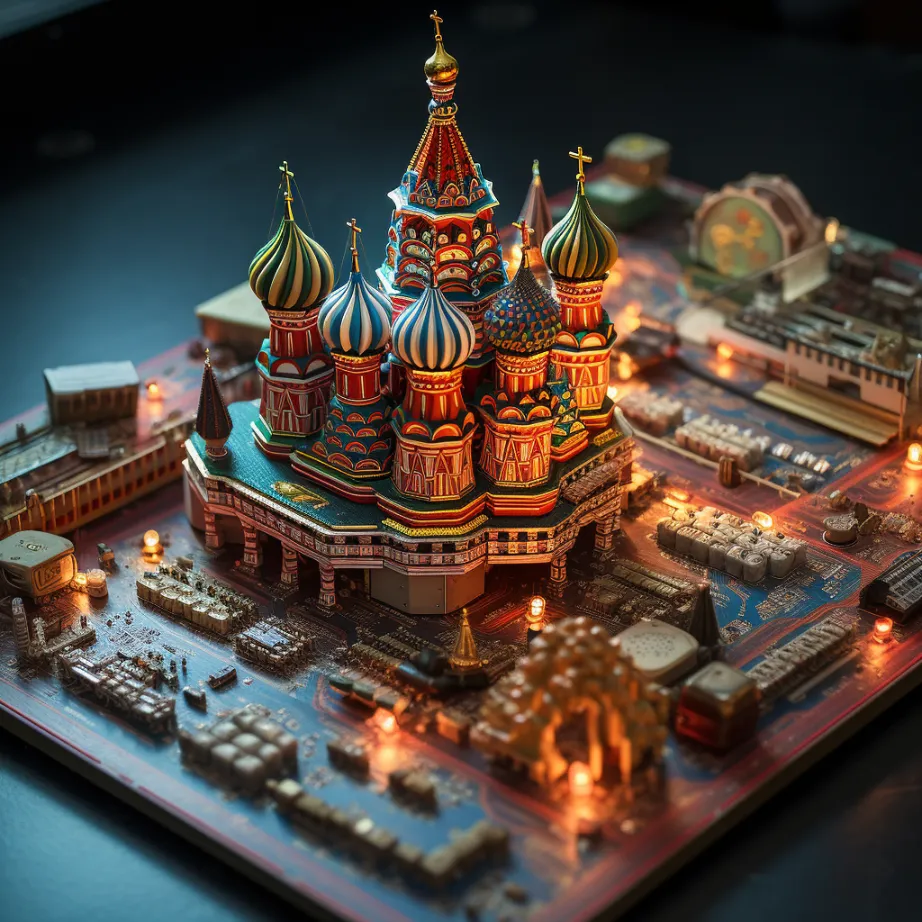Europe will struggle to curtail Russian tech theft

Russia has long depended on imported technology to develop, manufacture, and sustain its weapons programmes and defence industry. The invasion of Ukraine and the retrieval of debris from the battlefield have exposed the Russian defence industry’s reliance on cutting-edge Western microelectronics and other goods, such as high-end manufacturing equipment.
Russia’s technological needs
Much of the imported technology in Russian weapons systems—particularly advanced semiconductors—is produced or sourced outside of Europe. Nevertheless, the continent has historically been a rich hunting ground for Russian procurement.
European states are both creators of state-of-the-art technology and importers from other manufacturing powers, such as the United States and Japan. These dual characteristics create openings for Russian operatives. They can exploit exporters, prey on naive manufacturers, and set up front companies to benefit from the relative trust in European states within the global system of export controls.
As recently as 2020, France allegedly continued to deliver military technology to Russia under contracts concluded before the 2014 seizure of Crimea and the implementation of an EU arms embargo. This included navigation systems, cockpit displays, viewfinders, helmets, and electro-optical infrared systems for combat aircraft and helicopters.
Since the passage of the EU’s arms embargo in 2014 and the embargo on transferring dual-use technology in 2022, Russian procurement has been far less overt.
A 2022 RUSI study examined over 450 components from 27 of Russia’s most modern weapons systems. It found that the vast majority (318) originated in the United States, but over 10% (at least 55 unique components) originated from the European continent. Although transit routes for the goods are unclear, the greatest single European source of components in the study was Switzerland. It supplied 18 components and ranked fourth after the United States, Japan, and Taiwan in supplying technical equipment to Russia.
European states have also harboured front companies engaging in brokering, without the shipments physically travelling through the continent. Trade data suggests that a company registered in a house in suburban London facilitated the sale of electronics and chips valued at $1.2 billion to Russia from February 2022 to April 2023. The ease of registering companies provides an opportunity Russia has exploited.
Historically, a soft target?
From the earliest days of the USSR, Soviet operatives sought technology through trade delegations and espionage networks in Europe in the 1920s and 1930s. In the 1940s and 1950s, the Soviets reaped the benefits of technology developed by the Nazis during the Second World War through German reparations. Following the division of Germany, the Soviets benefitted from controlling east Germany, but also looked for technology in the west. Before the border was solidified, they moved much tech across—and also exploited Berlin before and after the wall.
In the early 1960s, the Soviet KGB intelligence agency elevated its technology procurement activities to directorate level as “Directorate T”. By the mid-1980s, the CIA had uncovered what Reagan administration officials described as a technology “haemorrhage” that triggered a full-scale technology-transfer scare:
Virtually every Soviet military research project—well over 4,000 each year in the late 1970s and over 5,000 in the early 1980s—benefits from these technical documents and hardware. The assimilation of Western technology is so broad that the United States and other Western nations are thus subsidising the Soviet military buildup.
The CIA report noted that most of the diversion of technology took place through Europe—although Asia was also growing in this role in the 1980s.
A 1982 US Special National Intelligence Estimate offers glimpses into the strategies pursued by the European allies within the Coordinating Committee for Multilateral Export Controls (CoCoM)—the Cold War export control arrangement that included NATO allies, Japan and Australia. It noted that Western Europe and Japan saw their political and security interests “best served by maintaining and increasing contacts with Eastern Europe and the Soviet Union to promote political and economic stability and establish a web of interdependence between East and West”. There were often clear tensions between security and commercial priorities in the Western alliance.
Germany remained central to the story. With its high-tech industry—and what the CIA allegedly described in 1985 as “ineffective” export controls—it was ripe for further Soviet exploitation. Communist operatives utilised the country as a transit hub. This was exemplified in a 1982 incident where US-origin electronic components were diverted from Germany to the USSR.
European defence
Forty-years later and employing many of the same methods, Soviet operatives—now Russian—still plunder Europe’s rich technological resources. European governments are now intensifying efforts to curtail the technological seepage and disrupt Putin’s military pursuits.
The EU has implemented 11 rounds of sanctions on Russia—including significant provisions to curb technology transfer. Washington also formed what it termed a “Global Export Control Coalition” to harmonise export controls on Russia in the early days of the war. The 27 EU member states, as well as the United Kingdom, Liechtenstein, Norway, and Switzerland, formed the majority of states involved in this effort.
Many states are clamping down on Russian networks—although the United States still takes a far more assertive approach. German law enforcement, for example, raided a series of companies in February 2023 under suspicion of supplying components to Russia through Turkish intermediaries.
Although some transshipments of US-origin goods through European jurisdictions persist, greater implementation of export controls since the onset of the war, coupled with the evolution of global supply chains, have triggered a shift in networks. Third-country hubs, with closer ties to Russia and further away from the US-led export control coalition, are both more prominent now and more difficult to address.
Beyond Turkey, the list of prominent hubs also includes Armenia, Georgia, Kazakhstan and the United Arab Emirates, according to a US State Department sanctions coordinator in June 2023. Russia is hungry for chips that are mostly available off the shelf, which allows its procurement networks to be more easily adapted.
Another threat for Europe than Russia’s quest for technology is China’s illicit procurement and industrial espionage. European industry, universities, and research institutes have frequently been targeted for their wares. Europe is softer on China than the United States, and has more extensive commercial connections, which makes European countries more vulnerable to technology theft.
More controls on the horizon
Between Russia’s war in Ukraine and renewed US efforts to use export controls to slow China’s military development, countering the illicit procurement of technology has risen up the Western agenda. It will only become more prominent in due course. The heightened interest in using export controls as a tool in great power competition has echoes of the 1980s.
Whatever the future of multilateral export control arrangements, in all likelihood—as in the 1980s—the United States will ask more of its European allies in the future and there may be more difficult choices ahead.




